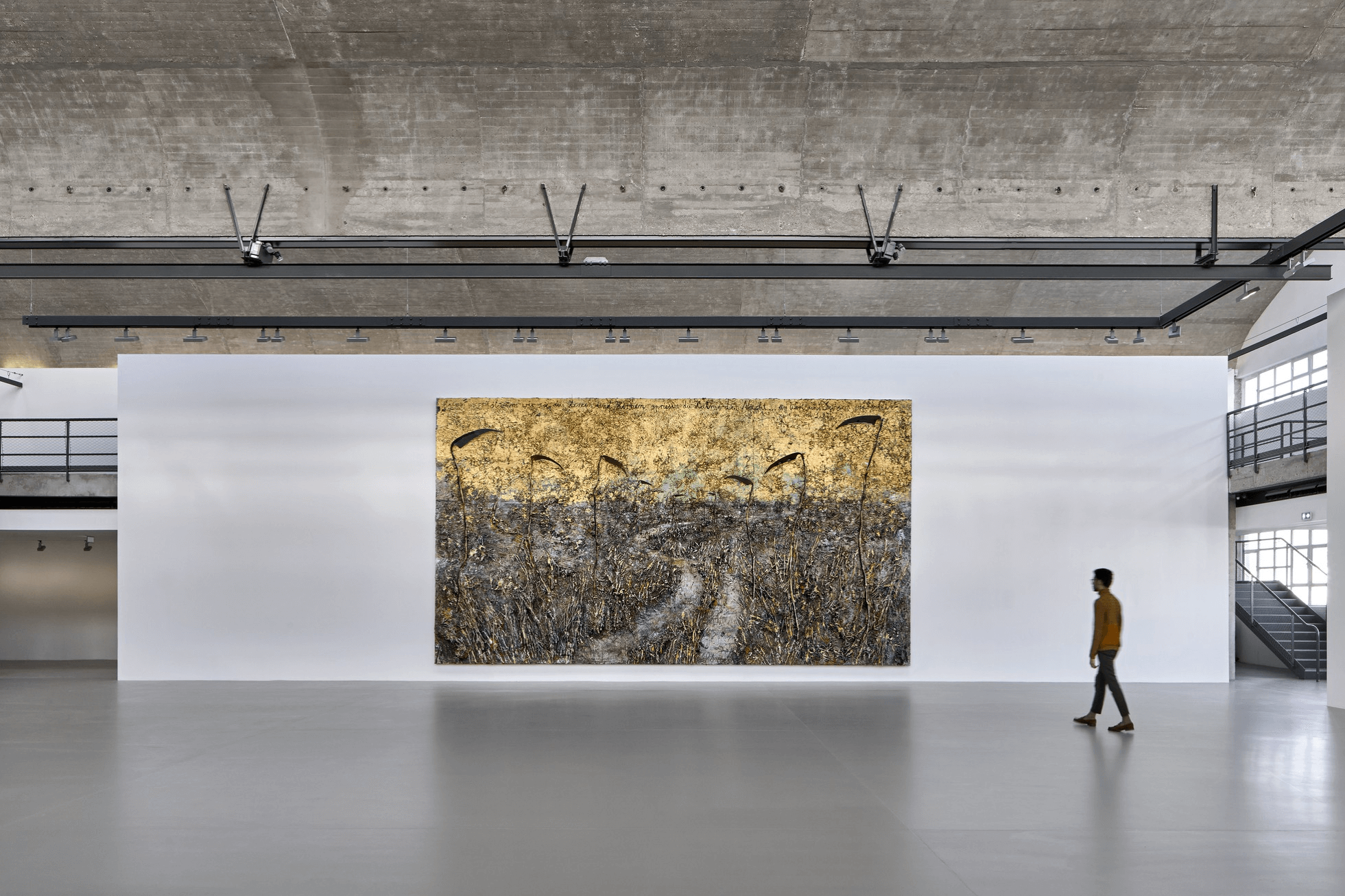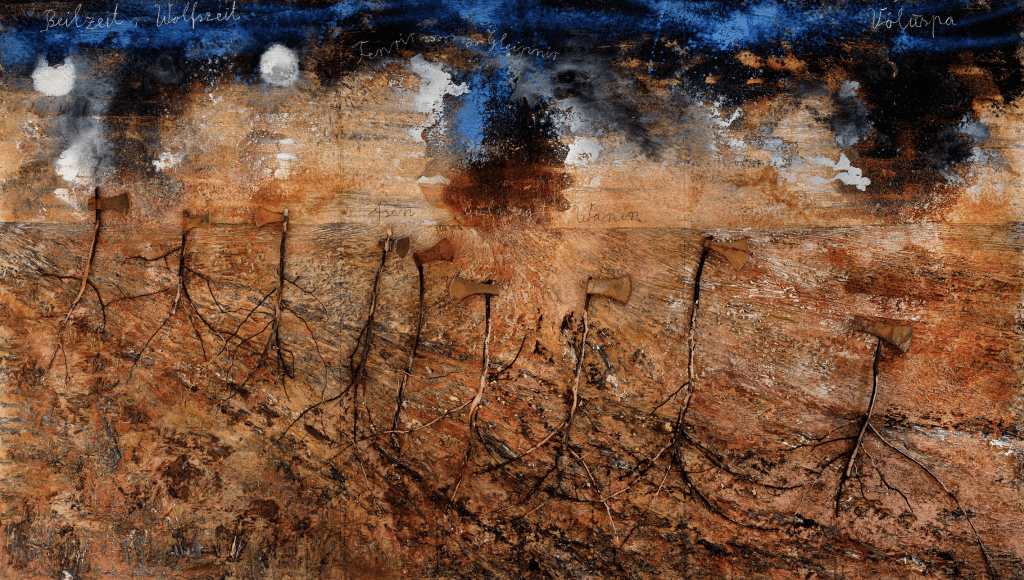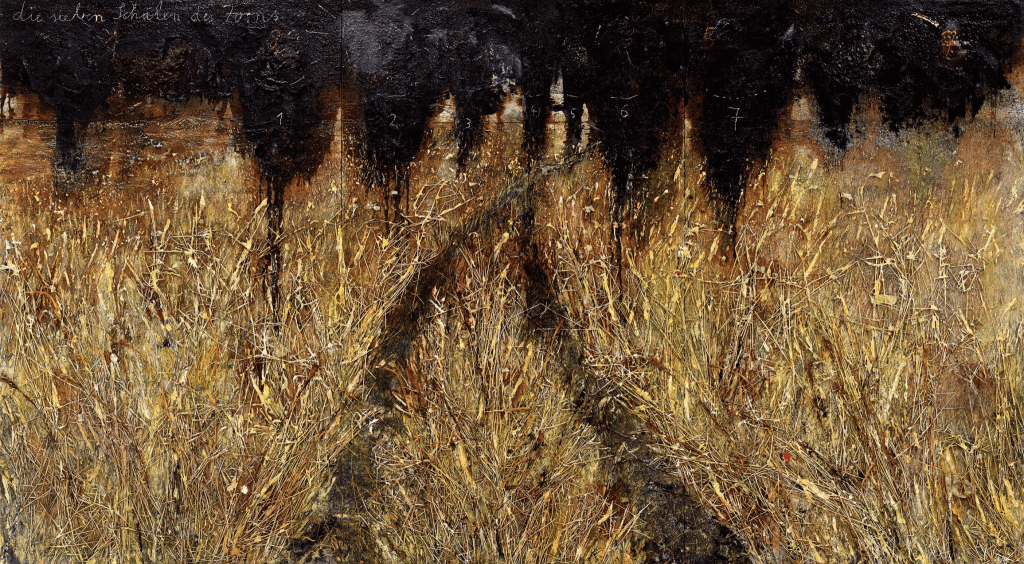Written by: VISUALHOUSE
Photography: Thomas Lannes and Georges Poncet
Gagosian is now presenting Field of the Cloth of Gold, an exhibition of four monumental new paintings by Anselm Kiefer, in its Le Bourget gallery.
Fusing art and literature, painting and sculpture, Kiefer engages the complex events of history and the ancestral epics of life, death and the cosmos. His boundless repertoire of imagery is paralleled only by the breadth of media palpable in his work.
The tension between beauty and terror, alongside the inextricable relationship between history and place, has animated Kiefer’s work since the 1970s. Drawing on the literature of cultural memory—including poetry, the Old and New Testaments, and the Kabbalah—Kiefer gives material presence to myths and metaphors.
He infuses the medium of paint with startling and unconventional gestures and objects, juxtaposing them with organic and abject materials such as straw, sand, charcoal, ash, and mud. Kiefer asserts himself as an iconoclast; his paintings undergo various processes—such as being cut, burned, buried, exposed to natural elements, splashed with acid, or poured over with lead—so as to be made anew.
These strategies, along with the use of materials such as lead, concrete, glass, fabric, tree roots, or burned books, create a symbolic resonance, making palpable both the movement and destruction of human life and the persistence of the lyrical and the divine.
Completed over the last two years, these works predate the COVID-19 pandemic, the ripple-effect crisis it created, and the international and cross-cultural relationships it has reconfigured.
While history has been fractured and unpredictable since the Field of the Cloth of Gold conference, our cultural memory holds the violent unpredictability of human relations on a continuum.


